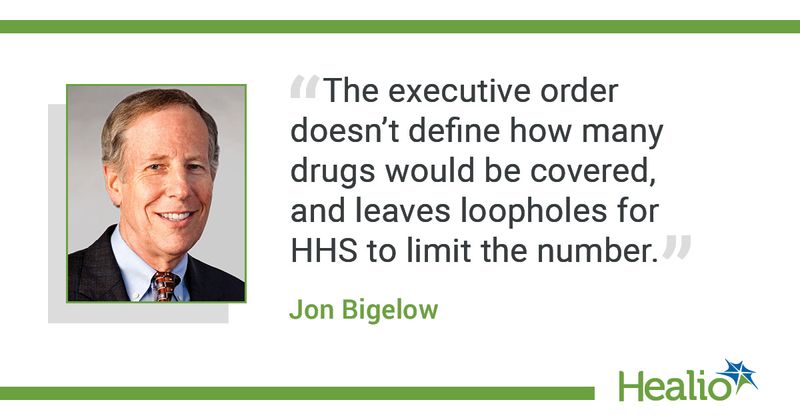Experts: Trump’s latest drug pricing executive order faces uphill battle
Click Here to Manage Email Alerts
President Donald J. Trump’s executive order that allows HHS to cap certain prescription drug prices for Medicare to what he called the “most-favored-nation price” will be difficult to implement, experts said.
The executive order, signed Sept. 13, states that Medicare Part B and Part D drug prices will align with the lowest cost of a drug that is sold to any country in the Organisation for Economic Co-operation and Development that has a “comparable per-capita gross domestic product.”

Nancy Nielsen, MD, PhD, a former senior advisor at CMS and now senior associate dean of health policy at the University at Buffalo, said that even without opposition, “federal rule-making is a formal, long and often contentious process.” Since the president’s plan faces strong opposition from pharmaceutical companies, the process will likely last even longer, she said.

“It will take months at least and will be challenged in court,” she told Healio Primary Care. “Count on it to be bitter, as opposition is mobilized, and any attempts to fix or control prices will be resisted to the end by the industries involved.”
Nielsen also said Trump could issue an “interim final rule” without going through the usual months-long rulemaking process, as he did to administer the Paycheck Protection Act during the COVID-19 pandemic. He has not done so as of this story’s posting.
Jon Bigelow, executive director of the Coalition for Healthcare Communication, told Healio Primary Care that the Sept. 13 executive order was signed after pharmaceutical companies failed to provide Trump with an alternative plan to lower drug prices. However, the executive order lacks important information, he continued.
“The executive order doesn’t define how many drugs would be covered, and leaves loopholes for HHS to limit the number,” he said. “It doesn’t explain how drugs used under Medicare Part D, where the federal government is not the buyer, would be covered.”
According to Raymond March, PhD, research fellow and director of FDAReview.org at the Independent Institute, other countries can test and produce drugs at lower costs, which is why they are “less expensive in foreign markets.”

“Unless the executive order evolves to address this, the price discrepancies will remain, and U.S. patients will bear the costs,” he said in an interview.
Stephen J. Ubl, president and CEO of the Pharmaceutical Research and Manufacturers of America, said in a press release that the executive order is “an irresponsible and unworkable policy that will give foreign governments a say in how America provides access to treatments and cures for seniors and people struggling with devastating diseases.”
References:
- PhRMA.org. PhRMA statement on most favored nation executive order. https://www.phrma.org/Press-Release/PhRMA-Statement-on-Most-Favored-Nation-Executive-Order. Accessed Sept. 16, 2020.
- Whitehouse.gov. Remarks by President Trump at signing of executive orders on lowering drug prices. https://trumpwhitehouse.archives.gov/briefings-statements/remarks-president-trump-signing-executive-orders-lowering-drug-prices/. Accessed Sept. 16, 2020.

